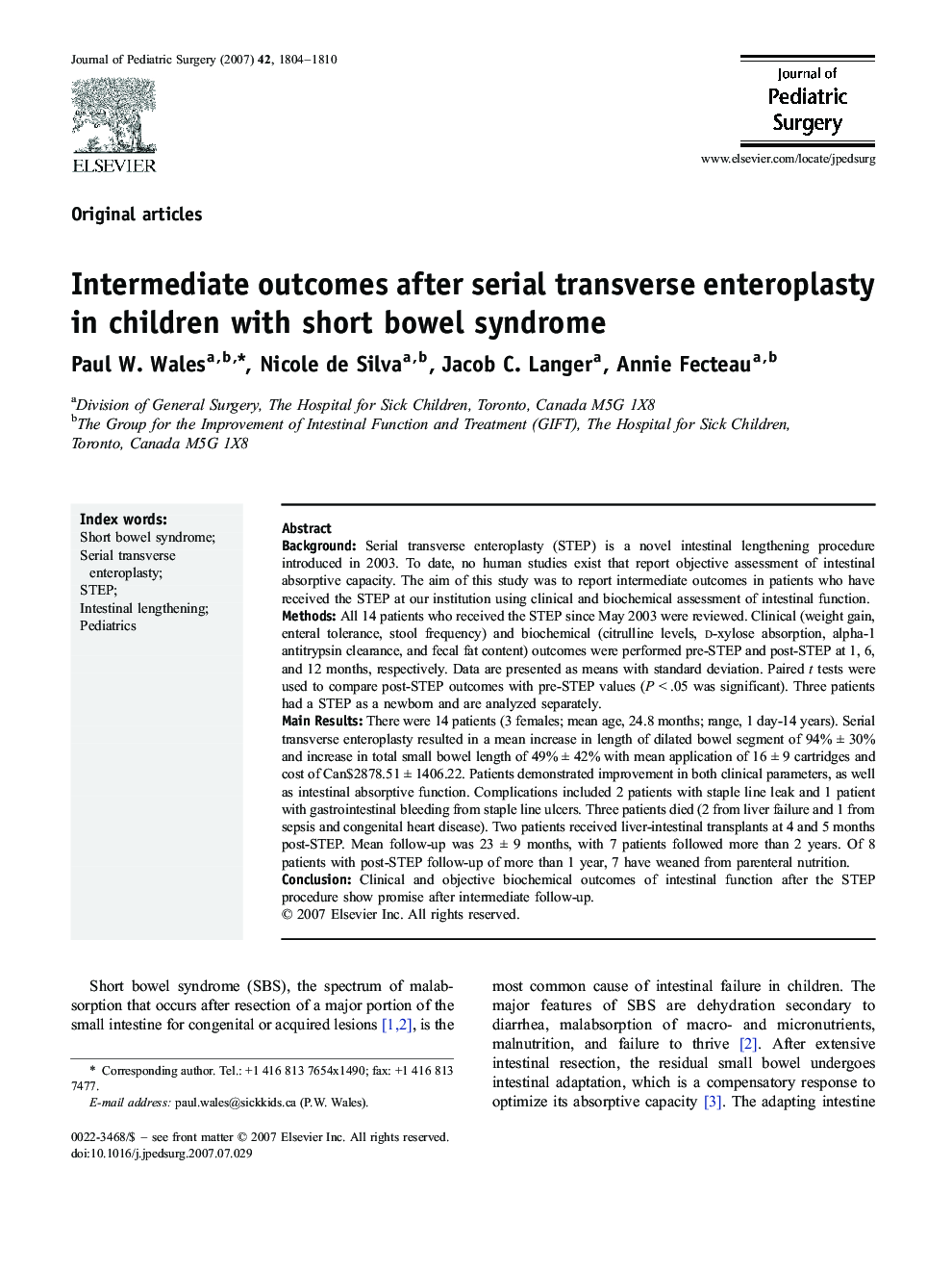| Article ID | Journal | Published Year | Pages | File Type |
|---|---|---|---|---|
| 4160039 | Journal of Pediatric Surgery | 2007 | 7 Pages |
BackgroundSerial transverse enteroplasty (STEP) is a novel intestinal lengthening procedure introduced in 2003. To date, no human studies exist that report objective assessment of intestinal absorptive capacity. The aim of this study was to report intermediate outcomes in patients who have received the STEP at our institution using clinical and biochemical assessment of intestinal function.MethodsAll 14 patients who received the STEP since May 2003 were reviewed. Clinical (weight gain, enteral tolerance, stool frequency) and biochemical (citrulline levels, d-xylose absorption, alpha-1 antitrypsin clearance, and fecal fat content) outcomes were performed pre-STEP and post-STEP at 1, 6, and 12 months, respectively. Data are presented as means with standard deviation. Paired t tests were used to compare post-STEP outcomes with pre-STEP values (P < .05 was significant). Three patients had a STEP as a newborn and are analyzed separately.Main ResultsThere were 14 patients (3 females; mean age, 24.8 months; range, 1 day-14 years). Serial transverse enteroplasty resulted in a mean increase in length of dilated bowel segment of 94% ± 30% and increase in total small bowel length of 49% ± 42% with mean application of 16 ± 9 cartridges and cost of Can$2878.51 ± 1406.22. Patients demonstrated improvement in both clinical parameters, as well as intestinal absorptive function. Complications included 2 patients with staple line leak and 1 patient with gastrointestinal bleeding from staple line ulcers. Three patients died (2 from liver failure and 1 from sepsis and congenital heart disease). Two patients received liver-intestinal transplants at 4 and 5 months post-STEP. Mean follow-up was 23 ± 9 months, with 7 patients followed more than 2 years. Of 8 patients with post-STEP follow-up of more than 1 year, 7 have weaned from parenteral nutrition.ConclusionClinical and objective biochemical outcomes of intestinal function after the STEP procedure show promise after intermediate follow-up.
